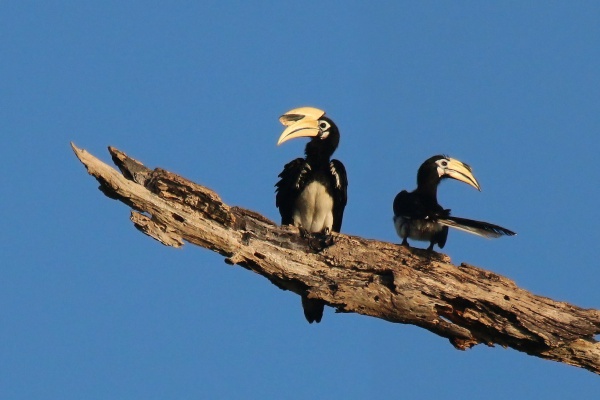Facts About Oriental pied hornbill
The Oriental Pied Hornbill, also known as the Sunda Pied Hornbill or Malaysian Pied Hornbill, is a captivating bird from the Bucerotidae family. It is one of the smallest and most prevalent hornbills in Asia, ranging across the Indian Subcontinent and Southeast Asia. These birds flourish in subtropical and tropical moist lowland forests, predominantly inhabiting the canopy.
Their diet is remarkably varied, comprising fruits, insects, shellfish, small reptiles, and occasionally small mammals and birds. This diverse diet enables them to play a crucial role in their ecosystem.
Belonging to the genus Anthracoceros, the Oriental Pied Hornbill is one of five species categorized under Indo-Malayan pied hornbills and black hornbills. They are medium-sized birds with striking plumage and a distinctive flattened casque on their bill. These birds are monogamous, meaning they pair for life, and they nest in pre-existing cavities, showing particular preferences when selecting their nesting sites.
Primarily frugivorous, Oriental Pied Hornbills consume a wide range of fruits, which makes them essential for seed dispersal and, thus, vital to the health of forest ecosystems. They breed from January to June, with the female sealing herself inside the nest cavity during incubation to protect the eggs.
Despite their adaptability, these hornbills face several threats such as habitat destruction, hunting, and the pet trade, which have led to population declines in some areas. Conservation efforts are underway, including captive breeding programs, reintroduction initiatives, and the creation of artificial nests where natural nesting sites are scarce.
Thanks to their ability to adapt to changing environments, the Oriental Pied Hornbill is not currently considered threatened. However, localized declines and extirpations underscore the need for ongoing conservation efforts to ensure their survival.

 Malaysia
Malaysia